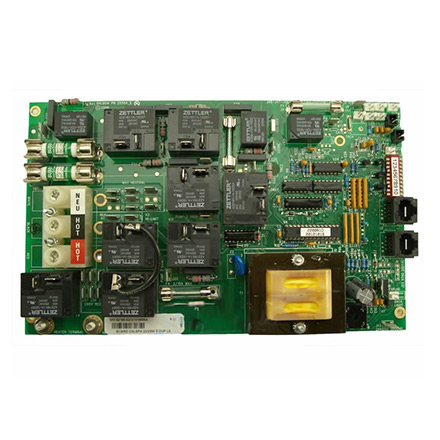Pyrolytic Low-E Glass A Revolutionary Solution for Energy Efficiency
In the realm of architectural design and construction, the quest for energy efficiency has led to the development of innovative materials that can significantly reduce energy consumption without compromising aesthetics. One such game-changing technology is Pyrolytic Low-E glass, a pioneering solution that has reshaped the glass industry.
Pyrolytic Low-E glass, also known as hard coat Low-E glass, is manufactured through a unique process called pyrolysis. This involves applying a thin layer of metal oxide, usually tin or silver, onto the surface of the glass while it's still hot, typically at temperatures around 600°C. The result is a highly reflective, yet transparent, glass surface that offers exceptional thermal insulation properties.
The 'E' in Low-E stands for emissivity, which refers to the glass's ability to emit heat. A standard glass has a high emissivity, allowing heat to pass through easily. In contrast, Pyrolytic Low-E glass has a low emissivity, reflecting a significant amount of heat back into its source, be it indoors or outdoors. This not only keeps buildings cooler in summer and warmer in winter but also reduces the load on heating and cooling systems, thereby cutting down energy consumption.
Moreover, Pyrolytic Low-E glass is not just about energy savings; it also enhances indoor comfort by controlling glare and maintaining natural light transmission. It allows sunlight to enter the building while blocking harmful ultraviolet (UV) rays, protecting furnishings and occupants from fading and sun damage It allows sunlight to enter the building while blocking harmful ultraviolet (UV) rays, protecting furnishings and occupants from fading and sun damage

It allows sunlight to enter the building while blocking harmful ultraviolet (UV) rays, protecting furnishings and occupants from fading and sun damage It allows sunlight to enter the building while blocking harmful ultraviolet (UV) rays, protecting furnishings and occupants from fading and sun damage
 pyrolytic low e glass
pyrolytic low e glass.
Its durability is another key advantage. Since the Low-E coating is fused directly onto the glass during the manufacturing process, it is highly resistant to scratches, wear, and weathering. This ensures long-term performance and minimal maintenance, making it a cost-effective option in the long run.
The integration of Pyrolytic Low-E glass in green buildings and sustainable designs has been widely recognized. It aligns perfectly with the global push towards net-zero energy buildings, reducing carbon footprints, and promoting environmental sustainability. Architects and builders are increasingly incorporating this technology in their projects, not only for its energy-saving benefits but also for its potential to enhance the overall aesthetic appeal of a building.
In conclusion, Pyrolytic Low-E glass represents a significant stride forward in sustainable architecture. Its energy-saving properties, durability, and aesthetic qualities make it an ideal choice for modern construction. As we continue to seek ways to minimize our impact on the environment, technologies like Pyrolytic Low-E glass will undoubtedly play a pivotal role, shaping the future of sustainable building design.


 It allows sunlight to enter the building while blocking harmful ultraviolet (UV) rays, protecting furnishings and occupants from fading and sun damage It allows sunlight to enter the building while blocking harmful ultraviolet (UV) rays, protecting furnishings and occupants from fading and sun damage
It allows sunlight to enter the building while blocking harmful ultraviolet (UV) rays, protecting furnishings and occupants from fading and sun damage It allows sunlight to enter the building while blocking harmful ultraviolet (UV) rays, protecting furnishings and occupants from fading and sun damage pyrolytic low e glass.
Its durability is another key advantage. Since the Low-E coating is fused directly onto the glass during the manufacturing process, it is highly resistant to scratches, wear, and weathering. This ensures long-term performance and minimal maintenance, making it a cost-effective option in the long run.
The integration of Pyrolytic Low-E glass in green buildings and sustainable designs has been widely recognized. It aligns perfectly with the global push towards net-zero energy buildings, reducing carbon footprints, and promoting environmental sustainability. Architects and builders are increasingly incorporating this technology in their projects, not only for its energy-saving benefits but also for its potential to enhance the overall aesthetic appeal of a building.
In conclusion, Pyrolytic Low-E glass represents a significant stride forward in sustainable architecture. Its energy-saving properties, durability, and aesthetic qualities make it an ideal choice for modern construction. As we continue to seek ways to minimize our impact on the environment, technologies like Pyrolytic Low-E glass will undoubtedly play a pivotal role, shaping the future of sustainable building design.
pyrolytic low e glass.
Its durability is another key advantage. Since the Low-E coating is fused directly onto the glass during the manufacturing process, it is highly resistant to scratches, wear, and weathering. This ensures long-term performance and minimal maintenance, making it a cost-effective option in the long run.
The integration of Pyrolytic Low-E glass in green buildings and sustainable designs has been widely recognized. It aligns perfectly with the global push towards net-zero energy buildings, reducing carbon footprints, and promoting environmental sustainability. Architects and builders are increasingly incorporating this technology in their projects, not only for its energy-saving benefits but also for its potential to enhance the overall aesthetic appeal of a building.
In conclusion, Pyrolytic Low-E glass represents a significant stride forward in sustainable architecture. Its energy-saving properties, durability, and aesthetic qualities make it an ideal choice for modern construction. As we continue to seek ways to minimize our impact on the environment, technologies like Pyrolytic Low-E glass will undoubtedly play a pivotal role, shaping the future of sustainable building design.